Normal Binocular Vision
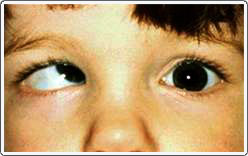
Child with infantile esotropia. The right eye is stuck up and in as the left eye is fixing straight ahead.
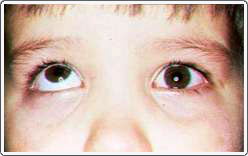
Child with a right hypertropia. The right eye is in the elevated position when the left eye looks straight ahead.
Normally, both eyes are aligned on the same visual target and the images from each eye are merged in the brain to form a single three-dimensional image, or binocular vision. The brain’s process of merging or “fusing” images from each eye into one image is called binocular fusion. The perception of three-dimensional depth is called stereoscopic vision. Stereoscopic vision is the highest level of binocular vision and requires intricate processing of information from both eyes. Binocular vision develops during early infancy, and proper alignment during this time is necessary for normal binocular development to occur. If not, then strabismus occurs, which can lead to a number of vision-threatening conditions.
The six extraocular muscles that move the eye are:
- Lateral rectus muscle
- Superior oblique muscle
- Medial rectus muscle
- Inferior rectus muscle
- Superior rectus muscle
- Inferior oblique muscle
Not all strabismus occurs at birth. It can be acquired throughout a person’s life for a variety of reasons. A problem affecting any of the six extraocular muscles in either eye will cause some disruption in binocular vision. Depending on the cause for the disruption and the severity of the problem, visual symptoms will vary.
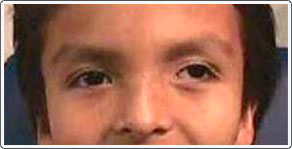
Child with congenital exotropia. Notice the left eye turning out while the right eye looks straight ahead.
If strabismus occurs after the visual development is complete, then it can cause double vision. However, in children up to approximately 8 or 10 years of age, the eye is still very plastic and the brain will shut off a crossed eye rather than produce two images. If this happens, the patient will likely develop amblyopia, which requires additional treatment. In adults and in children over 10 years of age, problems that affect the eye muscles will most likely cause double vision since the brain can no longer shut off the confusion. This “acquired” type of strabismus can be the result of a tumor or other serious condition and is reason for immediate referral.
Strabismus can be constant (all the time) or intermittent (off and on) and can affect both eyes (bilateral) or just one eye (unilateral). It can be present when both eyes are uncovered (tropia) or only when fusion is broken (phoria), like when you cover one eye with your hand. The type of strabismus can be a simple turning out or in of the eye, or can be complex involving a paralyzed muscle or damaged nerve. Depending on the cause and severity of the problem, the treatment can involve conservative follow-up, prism glasses, or complex eye muscle surgery.
The different types of strabismus are:
- Exotropia – eye turns out
- Exophoria – eye turns out when fusion is broken
- Esotropia – eye turns in
- Esophoria – eye turns in when fusion is broken
- Hypertropia – eye turns up
- Hyperphoria – eye turns up when fusion is broken
- Hypotropia – eye turns down
- Hypophoria – eye turns down when fusion is broken
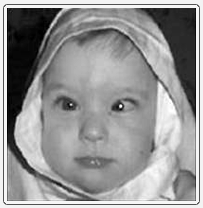
Patient with Peter’s anomaly, left eye, and congenital esotropia.

Surgery was performed to correct the strabismus and patient is doing very well with straight eyes. Note the light reflexes in both photos.
The only way to know for sure what is causing the strabismus is to see a specialist in strabismus, like Dr. Wright. The patient must have a complete eye examination including evaluation of eye movements, overall medical health, and prior history. As is often found in adults, the strabismus is caused by another health issue like a stroke or thyroid disease. In these cases, the patient’s medical problem must be assessed before appropriate treatment is started. Once full evaluation is completed, the strabismus problem can be addressed. This may require something simple like observation or prism glasses, or may necessitate complex eye muscle surgery.
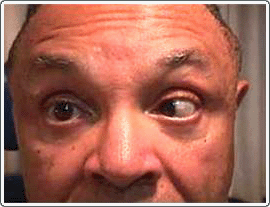
Pre-op photo of an adult who had esotropia strabismus for over 40 years.
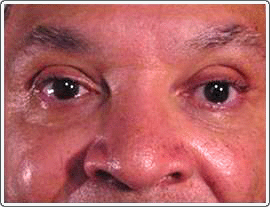
Post-op photo. Dr. Wright straightened the eyes, and the patient actually re-established binocular fusion and stereo acuity after all this time.

